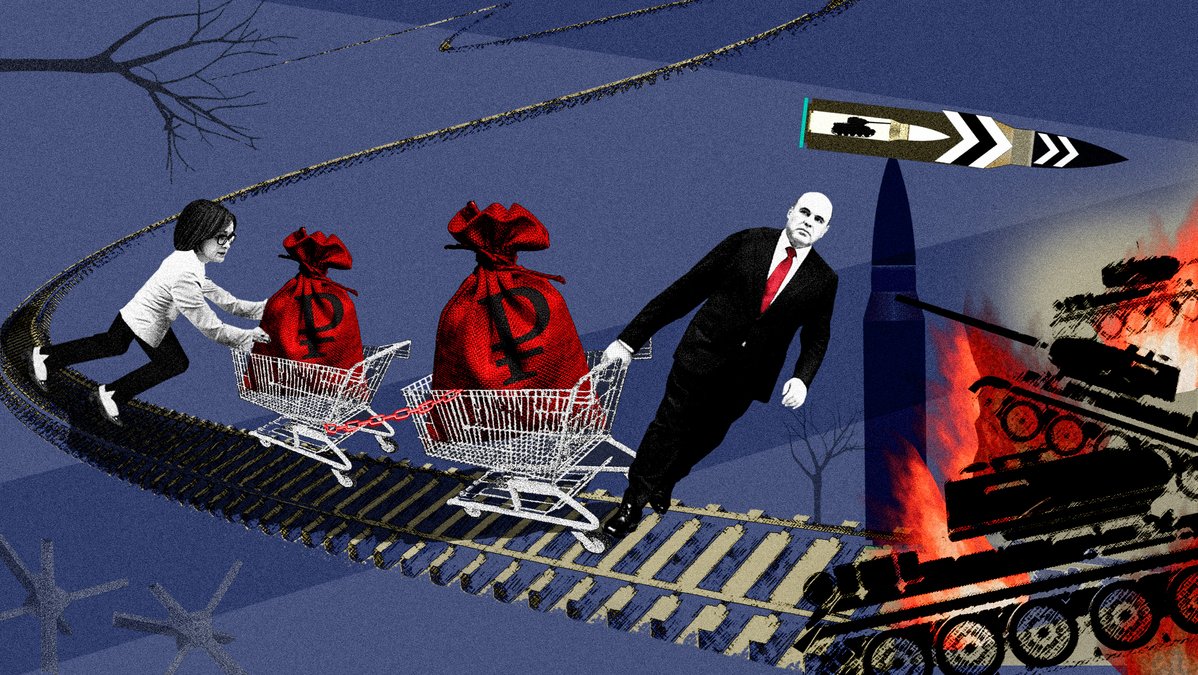The full-blown Ukraine invasion was unleashed almost a year ago. While the Kremlin at first believed it could “capture Kyiv in three days”, it quickly became obvious that Ukraine would resist it with everything the country had. In order to keep up the war effort, Russia was forced to remodel the whole defence industry: authorities began involving both military and civilian companies in official defence orders.
Russian Prime Minister Mikhail Mishustin’s team was put in charge of militarising the economy. Members of his team are often described as technocrats, or people who are removed from ideologies and, even more so, the war. In the winter, when Moscow’s offensive on Kyiv was widely anticipated, the technocrats dramatically ramped up the pace of their economic mobilisation: officials were making increasingly more trips to defence industry factories and facilities, the government put forward a new military-related initiative (a one-time business tax levy, for instance), while more than 1 trillion rubles (€12.6 billion) was allocated to the defence sector in January, which created a record high state budget deficit.
Novaya Gazeta Europe correspondent Ira Purysova spoke to government sources, economists, and political scientists to find out how much the Russian economy changed since 24 February 2022 and whether Vladimir Putin will have enough resources to wage a long war of attrition against Ukraine that enjoys backing from Europe and the US.
“It may sound very cynical, but I managed to land a serious state project with decent financing only due to 24 February. It happened solely because truly talented and qualified specialists who could prove themselves there refused to work for the state. The remaining handful either completed their projects and resigned or continued working while slowly burning out from the constant stress. Even [political] absenteeism, which many had to resort to including me, didn’t help here,” a senior manager of a state digitisation project told Novaya Gazeta Europe on the condition of anonymity.
Despite the career leap, he was soon discouraged by the “mounting chaos” in the public administration sector and “misappropriation of government funds”. As a result, the senior manager is now on the verge of stepping down: he is only staying because there are no other job prospects in Russia, due to unfinished projects, and obligations to his colleagues.
Riding the COVID wave
The officials serving in Mikhail Mishustin’s government are traditionally viewed as technocrats who are removed from ideologies and put in office to address specific tasks. Their team was assembled long before the war, largely as opposition to the ineffective government of Dmitry Medvedev that resigned in January 2020. Andrei Yakovlev, economist and Harvard University’s Davis Centre visiting scholar, believes that Mishustin’s technocrat team was crucial first and foremost to improve the quality of public administration, but it was not prepared to deal with such shocks as the pandemic or the Ukraine war.
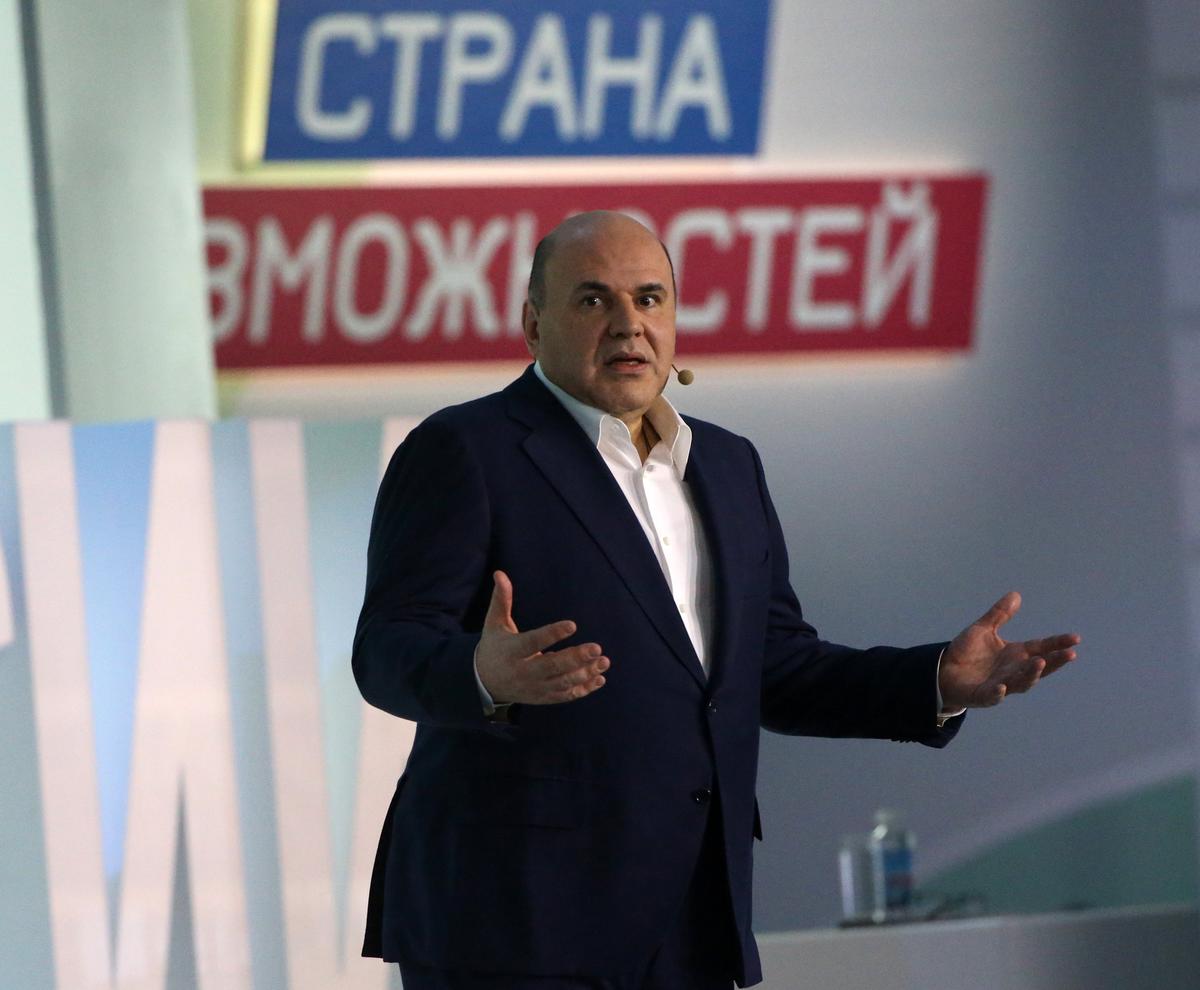
Russian Prime Minister Mikhail Mishustin at the Leaders of Russia 2022 Forum. Photo: Contributor / Getty Images
Yakovlev notes that the new ministers did manage to address the pandemic, save for a few exceptions: the subsidy allocation system was devised equally and was working. Ultimately, according to the HSE Development Centre, Russia managed to overcome the crisis better than the world as a whole. In 2020, the Russian GDP contracted by 3.1% while the global economy dropped by 3.5% (although Russia made the list of the countries with most COVID-related deaths despite the fact that the Kremlin managed to avert a serious economic decline).
“In a way, this approach worked in 2022 as well. The anti-crisis measures triggered [after the hostilities broke out] were largely based on the 2020 experience,” Yakovlev notes. “The initial manifestations of the two crises were similar: supply chains were interrupted in both cases, it’s just that quarantines were to blame for it during COVID, while sanctions were behind the interruption now. No one was talking about a war-time economy in the spring-summer. Having spoken to people from ordinary businesses, I can say that the Kremlin’s fundamental position was as follows: there’s no war, we have a special [military] operation which does not affect ordinary businesses, including civilian industries.”
However, it would soon become impossible to turn a blind eye to the war.
Technocrats in uniform
Political scientist Ivan Preobrazhensky emphasises that the militarisation of Russia’s economy unfolded in several stages. Initially, the Kremlin believed in a quick victory, therefore, no ideas of a militarisation were floated. However, when it became clear that the war would go on for a while, the first significant changes were rolled out.
In July, Industry and Trade Minister Denis Manturov was promoted to Deputy Prime Minister and retained his previous position, while Deputy Prime Minister Yuri Borisov, who used to be in charge of the industry and military industrial complex was relocated to Roscosmos, Russia’s space agency. Experts then told Novaya-Europe that this decision moved responsibility for the defence sector to the Industry and Trade Ministry.
This is when the first laws were adopted that paved the way to mobilise the economy for the war needs. In particular, the law on “special economic measures” which mandates that companies cannot refuse army supply state contracts and regulates overtime work.
The next stage of the economy militarisation commenced following the “partial mobilisation” announcement in September, Preobrazhensky notes. On the one hand, legal changes continued as Vladimir Putin signed a law in late September that criminalised violating conditions of state defence contracts punishable now by up to 10 years behind bars instead of a fine. On the other hand, the structure of the military industrial complex’s operations was modified. Putin created a coordination council to meet the needs of Russia’s war in Ukraine a month after the draft announcement, while civilian companies started fulfilling state defence contracts.
The latest, as of today, militarisation stage began in December as senior officials, including Putin, paid visits to defence industry factories. A Novaya-Europe source believes that the visits were meant to motivate management and workers alike by shedding light on their crucial role in the war and legitimising federal interference in the defence sector.
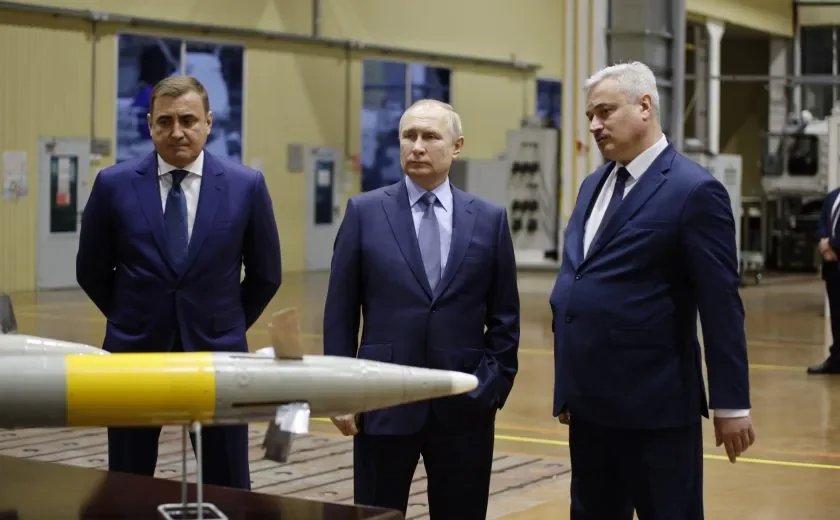
Vladimir Putin during a visit to a military plant in Russia’s Tula. Photo: The Tula government’s press service
Good ol’ mobilisation
The latest mobilisation stage brought along new initiatives with it. First Deputy Prime Minister Andrey Belousov recently revealed that the government is involved in talks with large companies about a “one-time voluntary levy” similar to windfall tax. Moreover, the government tabled a bill to the parliament on handing over clothes and shoes confiscated by the customs service and other relevant agencies to the Russian Defence and Emergencies Ministries.
Ivan Preobrazhensky links the hyper activity of the past months to the fact that the Kremlin is failing preparations for a new possible wave of mobilisation and cannot even fully supply the current army. Moreover, Moscow is clearly getting ready to wage the Ukraine war for several years.
The 2022 economy mobilisation unlikely came as a shock to officials. In reality, the “creeping militarisation” has been going on for a number of years now. Experts polled by Novaya-Europe are unanimous in their opinion that the increase of military commitments and classifying of military budgets began even before the hostilities in southeast Ukraine and Crimea’s annexation in 2014.
Stockholm International Peace Research Institute (SIPRI) has been ranking Russia in top five countries globally in defence spending almost annually since 2006.
Experts also described the distance the government puts between itself and the war as an illusion. Preobrazhensky justifiably notes that Vladimir Putin could easily be thinking about the future war in 2020 when appointing Mishustin, especially when we keep in mind that the subsequent constitutional amendments, Navalny’s poisoning attempt, and political repressions resembled a “clearing of the field” ahead of the battle. The Russian leader needed a person in government who could recalibrate themselves to fulfil any order.
Ilya Shumanov, Director General of Transparency International Russia, notes that there are quite a few true “war hawks” in the Russian government. Military and intelligence bloc representatives fit the brief: Interior Minister Vladimir Kolokoltsev, Defence Minister Sergey Shoigu, and even Industry and Trade Minister Denis Manturov somewhat (the Industry and Trade Ministry has departments that oversee the defence industry even though they did not have much control over the sector in the pre-war times). The technocrat image is primarily crafted by the economic bloc of the government which is not directly tied to political processes and the war in particular. However, Shumanov believes that it does not wield much influence.
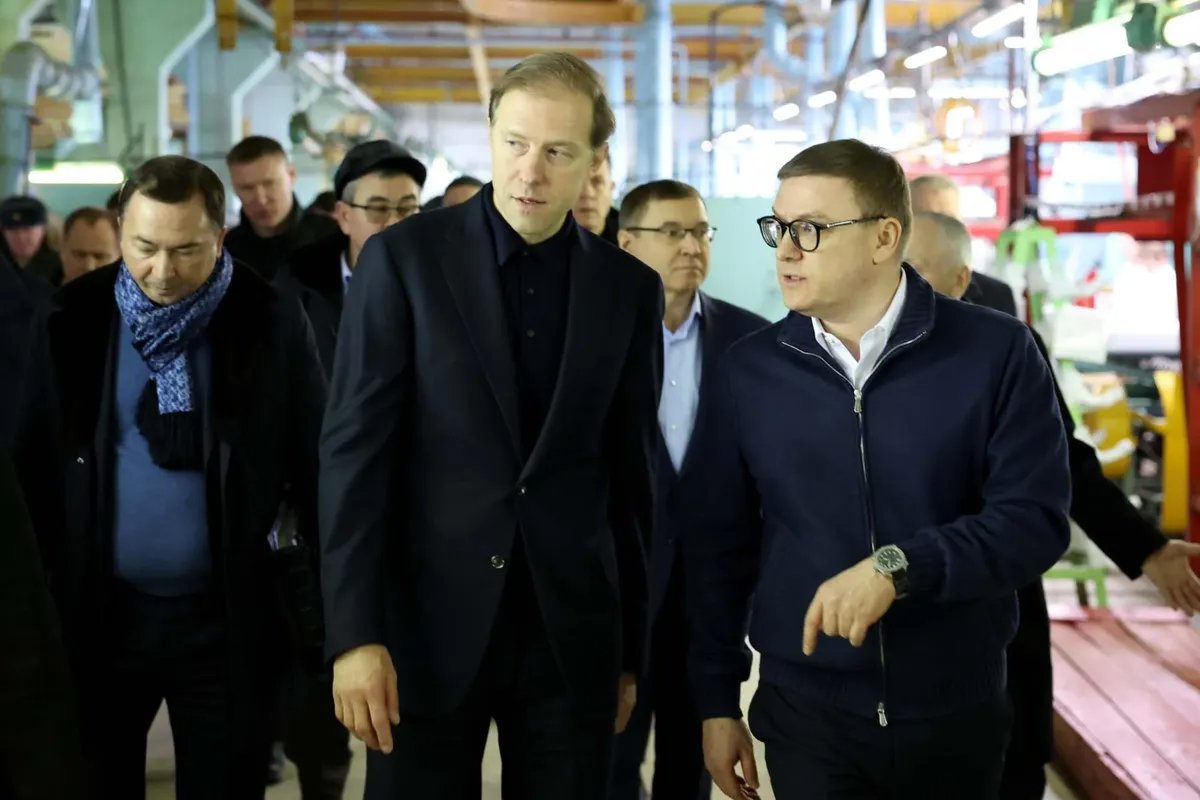
Minister of Industry and Trade Denis Manturov during a visit to the Chelyabinsk region industrial facilities. Photo: gubernator74.ru
War council
Russia’s coordination council for the needs of the Russian armed forces and military bodies was established by Putin on 21 October, a month after the Kremlin started drafting people to send to the Ukraine war in response to widespread reports that the draftees lack proper equipment. Prime Minister Mishustin was put in charge of the newly established agency. The council creation served as an important milestone in war management transformation: the role of civil officials in it increased manifold, while the operation of the military industrial complex and its financing were significantly altered.
It is not the first time Moscow has used this move: a similar council was created in 2020 to tackle the pandemic, and the prime minister was also overseeing it.
Apart from Mishustin, 18 people made the council member list: six deputy prime ministers, ministers for economic development, finance, defence, internal affairs, emergencies, Moscow Mayor Sergey Sobyanin, FSB Director Alexander Bortnikov, and other agency representatives.
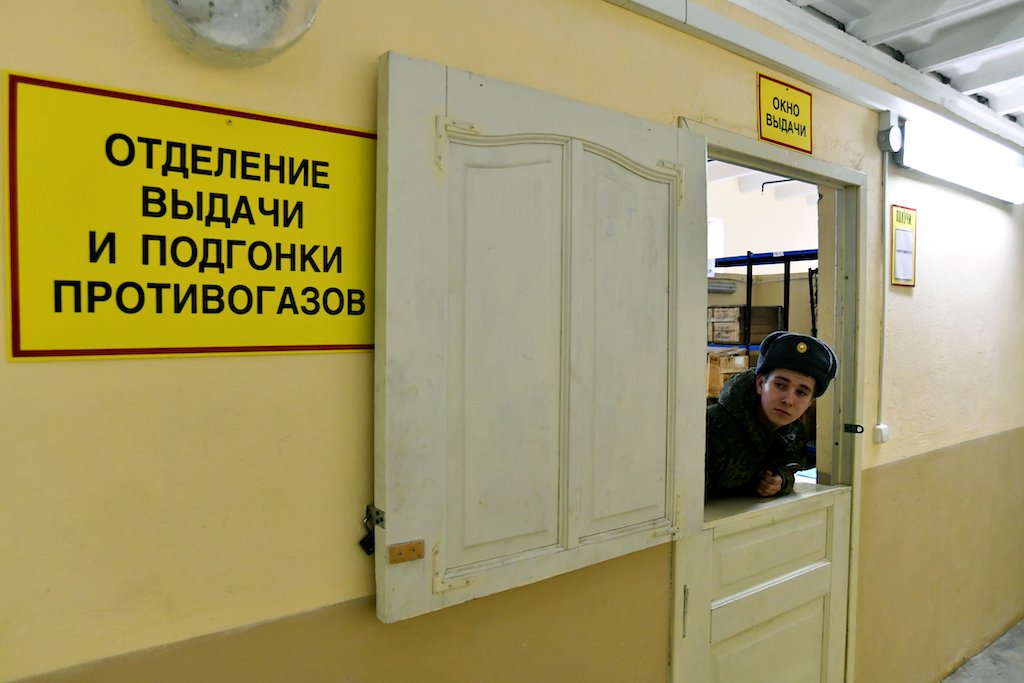
Photo: ‘Gas mask calibration and issuance unit’. Photo: Arkady Budnitsky / Anadolu Agency / Getty Images
The council has been meeting regularly since it was established: initially every week, and then the council moved to monthly meetings. Moreover, work groups headed by the deputy prime ministers were formed.
Andrei Yakovlev emphasises that in parallel to the council, Mishustin and key ministers take part in meetings with Putin or attend Security Council sessions each week.
The expert notes that the council member list is also emblematic.
According to him, it is more of a forum where the prime minister is but a nominal figure, while military and intelligence agency representatives reign supreme.
They formulate the instructions which will be implemented by the government. Differences are settled at meetings with Putin.
A source tells Novaya Gazeta Europe that following the creation of the coordination council, the economic bloc in the government has begun reforming the defence industry financing model and drafting a system to oversee the defence production line.
In late November, the government allowed military and intelligence agencies to organise procurements of war-time products through a simpler procedure from just one contractor, or without any competition in other words.
These changes were necessary to give the defence sector an opportunity to receive money in direct or almost direct subsidies, the source believes. According to the Novaya-Europe data department, the amount of money that could have been given to the defence sector reaches around 1.1 trillion rubles (€13.88 billion). This can be deduced from the abnormally high state budget spending observed in January when revenues dropped by 35%, while expenses suddenly went up by 59%. In money terms, the budget deficit increased to 1.7 trillion rubles (€21.46 billion) or more than half of the yearly deficit benchmark that was used in the making of the budget (2.9 trillion rubles or €36.6 billion).
According to a Novaya-Europe source in an analytical centre close to the government, the Kremlin will have enough resources in the next two years to carry out around 4-5 similar transactions.
A press release by the Russian Finance Ministry, which claims that the drastic expense increase in January was caused by the “expeditious conclusion of contracts and advance financing for certain contracted costs”, also backs up this report. However, it is impossible now to find out what all this money was spent on — the data is classified.
Tank experts wanted
Agency project journalists note that the increase of state defence contracts helped industries to avert a serious decline in 2022. According to Rosstat, Russia’s national statistics office, the yearly drop of Russia’s industrial output stands at 0.6% in 2022. Despite the fact that the data on war-related production output is confidential, we can draw conclusions about its increase through indirect signs: for instance, the production of fabricated metal products rose by 7%, while manufacturing of electronics, computers, and optics went up by 1.7%. Both categories of products can be used for military purposes. Meanwhile, the civilian sector often demonstrated a completely different picture:
car manufacturing plummeted by 45%, while textile and wood industries dropped by almost 10%.
A Novaya-Europe source familiar with Russia’s military industrial sector says that defence industry factories and defence contract money were placed in a closed system completely cut off from the rest of the market.
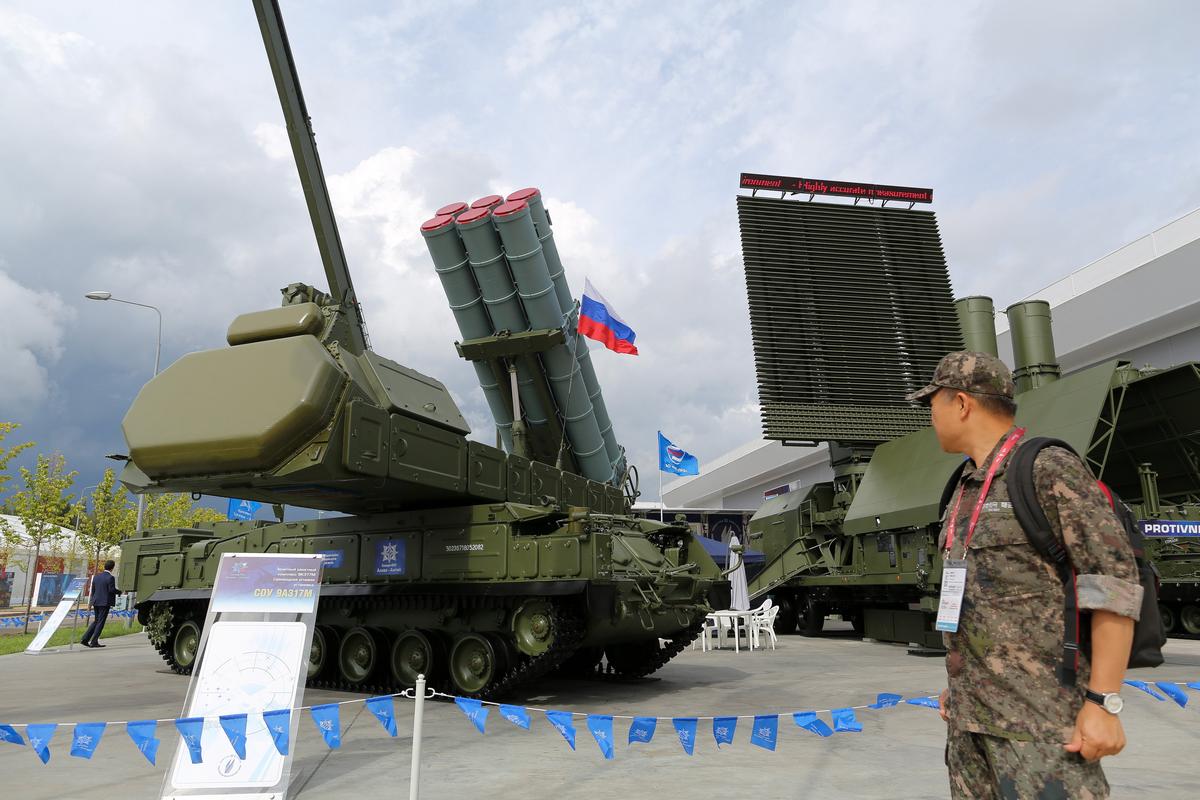
The Buk-M3 missile system presented at the International Military-Technical Forum in Kubinka. Photo: Andrey Rudakov / Bloomberg / Getty Images
“Previously, the military industrial sector’s operation was not much different to your typical financial and industrial activity: same contracts, same payments. Everyone was worried about revenues, while industries were not interested in making a huge number of products,” the military expert says. “Now, real output is much sought after, and money is no longer a concern. For instance, Uralvagonzavod (Russia’s machine-building company — translator’s note) used to produce around 100 tanks per year, while now it is instructed to make at least one machine per day and 30 per month.”
He also tells Novaya-Europe that in theory, Russia should not face issues with expanding and scaling production: many factories still have the ability to upgrade output inherited from the Soviet era. Although, many of the Soviet production lines did not survive the 1990s transition to market economy and were quite literally “scrapped for metal”.
Moreover, sanctions did not affect the military industrial complex as much as the civilian sector. The expert points out that Uralvagonzavod practically rolled back production of train carriages due to the lack of imported bearings. The staff that used to work on them is now employed to produce tanks.
The defence sector has been adapting to surviving under sanctions since 2014. Many imported parts used in the military production (primarily electronics) were shipped from China even before 2022, so the market faced more of a logistical problem than anything else.
Civilian industries started feeling the Ukraine war effects last September. Yakovlev notes that previously, businesses mostly tried to withstand sanctions, while in the autumn, businessmen faced the draft and risks of key employees being shipped off to the frontlines. This is why the business community made a move in early October ahead of the creation of any coordination councils and engaged in informal talks with regional authorities. Businesses were presenting the following idea: factories will help authorities to meet draft quotas in exchange for keeping key employees in place (people working in industries were drafted in the very first days since the announcement came out).
It is very easy to find media reports about civilian industries transitioning to meet military needs which started to emerge in the autumn.
In October, the government of Siberia’s Kemerovo region reported about 11 businesses that began producing military equipment in place of its normal output: sleeping bags, balaclavas, gloves, and undershirts.
Other regions of Russia also were writing about this military makeover of industries. BBC Russian News reported about a businesswoman from the Khabarovsk region, Far East Russia, who received a state contract to produce 9,418 sleeping bags. Her employees had to give up their weekends to fulfil the order.
Even though the Russian army is finding itself in a difficult position (and very far from what the Kremlin envisioned in the beginning of the war) and we can have conversations about the equipment and supply problems until the cows come home, a military expert polled by Novaya-Europe believes that the economy mobilisation can still have its effect on the frontline balance of power.
“Russia’s military and political bloc has made the decision to play a long game and wear down Ukraine to win,” he says. “We can see that Western countries still send weapons to Ukraine in low quantities and take their time to supply long-range missiles and jets on top of that. It is crucial in war times who throws firewood in the furnace and how much. Ukraine now cannot produce its own weapons for obvious reasons, so the army is fully dependent on the lend-lease programme. Russia also has outdated military hardware that needs repairing, but the country has more opportunities to quickly whip it back into shape.”
‘Mobilisation economy’ already?
A year after the invasion of Ukraine, state military expenditures have reached record levels in Russia. According to Re:Russia, currently, the government plans to spend even more on frontline needs and on controlling the seized territories than it does on maintaining the economy: in the 2023 budget project, it covers about a third of all expenditures: 9.4 trillion (€117.9 billion) out of 29 trillion rubles (€363.8 billion) This includes national defence and security spheres.
If we compare this to the proposed budget for 2022, this is an exorbitant increase. Expenditures on national defence (this sphere finances the Federal Security Service, the Interior Ministry, the Investigative Committee, the Prosecutor General’s Office, the Federal Guard Service, the National Guard, and the Federal Penitentiary Service) have nearly doubled: from 2.5 trillion (€31.4 billion) to 4.6 trillion rubles (€57.7 billion).
If we count only the military expenditures (in the national defence section), those have risen by 1.4 trillion rubles (€17.6 billion). The exact structure of the section is classified; however, analysts believe that a lion’s share of budget funds will be allocated for military purposes.
Ilya Shumanov also points out that the money allocated for the war can be “hiding” behind other sections of the budget, for example, social expenditures or education expenditures, as they include pay-outs and benefits to soldiers and their children. Russian servicemen are promised hefty sums in case of injury or death on the frontline: 6 million (€75,300) and 12 million rubles (€150,600), respectively. It will also be easier for them and their children to get a higher education: at the end of last year, the Russian State Duma (lower house) approved a third reading of the bill that allows servicemen and their children to enter university for free within a 10% quota.
In this context, the term “mobilisation economy” has been mentioned a lot over the past year. To put it simply, this term means concentrating and using the country’s resources to counteract a foreign threat or to overcome a crisis caused by extraordinary circumstances.
Despite the fact that at a first glance, the changes in the military industry seem colossal, it is too early to talk about a mobilisation economy, economist Vladislav Inozemtsev believes.
According to the expert, in case of a serious militarisation, the expenditures should grow manifold. Examples of this can be found throughout history: in the 20th century, even the developed countries showed more significant changes in the structure of their economy when they entered a military conflict than Russia does today. Budget expenditures grew manifold, the public debt rose, while the industrial sphere significantly reoriented itself. During WWII, the US budget deficit reached 30% of its GDP ($55 billion). However, on the whole, after WWII ended, there have been no more examples of developed countries switching to a “military economy”: even during the Vietnam War, the US made more changes in the economy through the financial system than the industrial sphere, Inozemtsev says.
On the other hand, the situation in Ukraine’s economy right now fits the criteria for a mobilisation economy. The government plans a 20% budget deficit for 2023, while the expenditures have been reoriented towards the war: over 1.1 trillion UAH (€27.8 billion) are planned to be spent on defence. Out of this sum, the Ukrainian Defence Ministry will receive 850 billion UAH (€21.5 billion) for maintaining the Armed Forces and modernising their military equipment: double than what was planned in 2022, before the Russian invasion started. Ukraine’s state debt in 2023 will reach about 100% of the country’s GDP: 6.4 trillion UAH (€162.2 billion).
However, it is unlikely that Russia will be able to switch to a WWII-style military economy.
“Over the years that armament development programs have been underway, that is, since 2011, Russia’s military industry has reached a plateau of sorts, but nothing more than that. In order to militarise the economy using the Soviet or the US model, there has to be a completely different approach,” Inozemtsev claims.
Besides, the economist notes that the state of Russia’s industrial sphere should not be overestimated: it took a serious hit following the collapse of the Soviet Union, and it is unlikely to scale up its production sharply. Inozemtsev points out that corruption is also an important factor. According to the economist, to understand how much money will actually go to the war effort, and not into someone’s pocket, we need to subtract about 30% from the current sum.
Taking into account all these factors, the possibility of a real militarisation of Russia’s economy is going down significantly. The current economic capacity and the skills of the technocrats may be enough to maintain “trench warfare”. However, neither the economy nor the technocrats will be able to sustain a war of attrition with scattered large-scale offensives of the Russian army in Ukraine. No matter how long the economic mobilisation in the government lasts.
Join us in rebuilding Novaya Gazeta Europe
The Russian government has banned independent media. We were forced to leave our country in order to keep doing our job, telling our readers about what is going on Russia, Ukraine and Europe.
We will continue fighting against warfare and dictatorship. We believe that freedom of speech is the most efficient antidote against tyranny. Support us financially to help us fight for peace and freedom.
By clicking the Support button, you agree to the processing of your personal data.
To cancel a regular donation, please write to [email protected]
